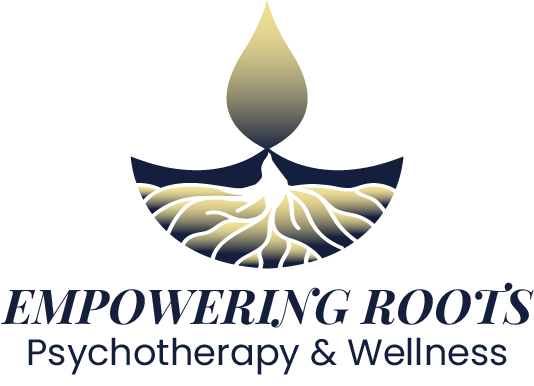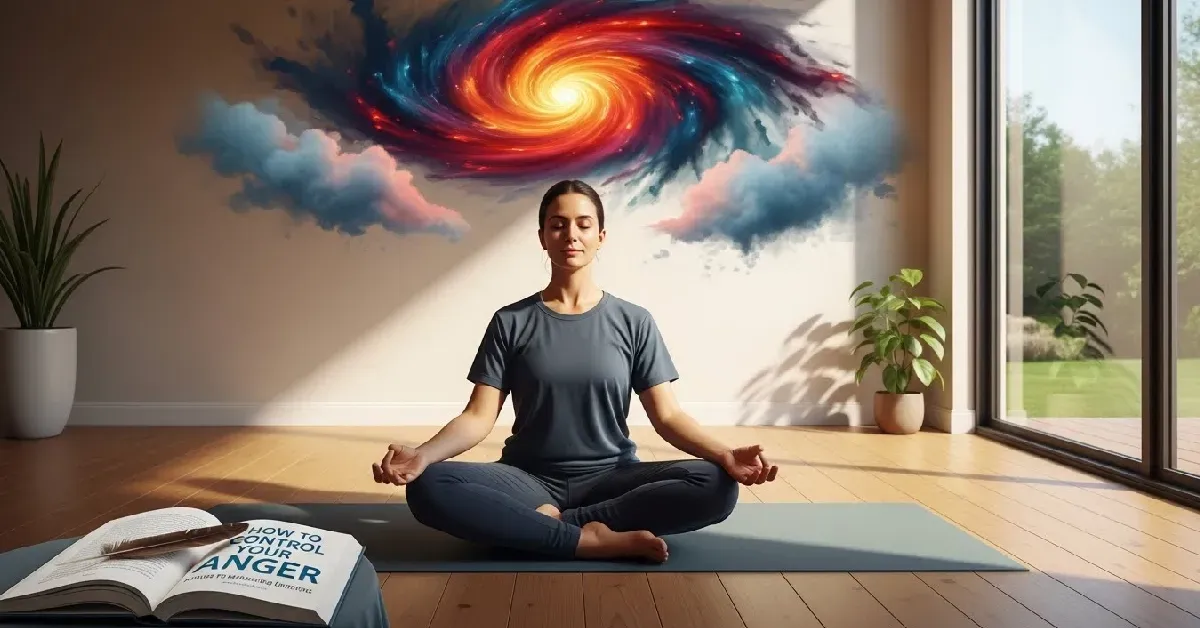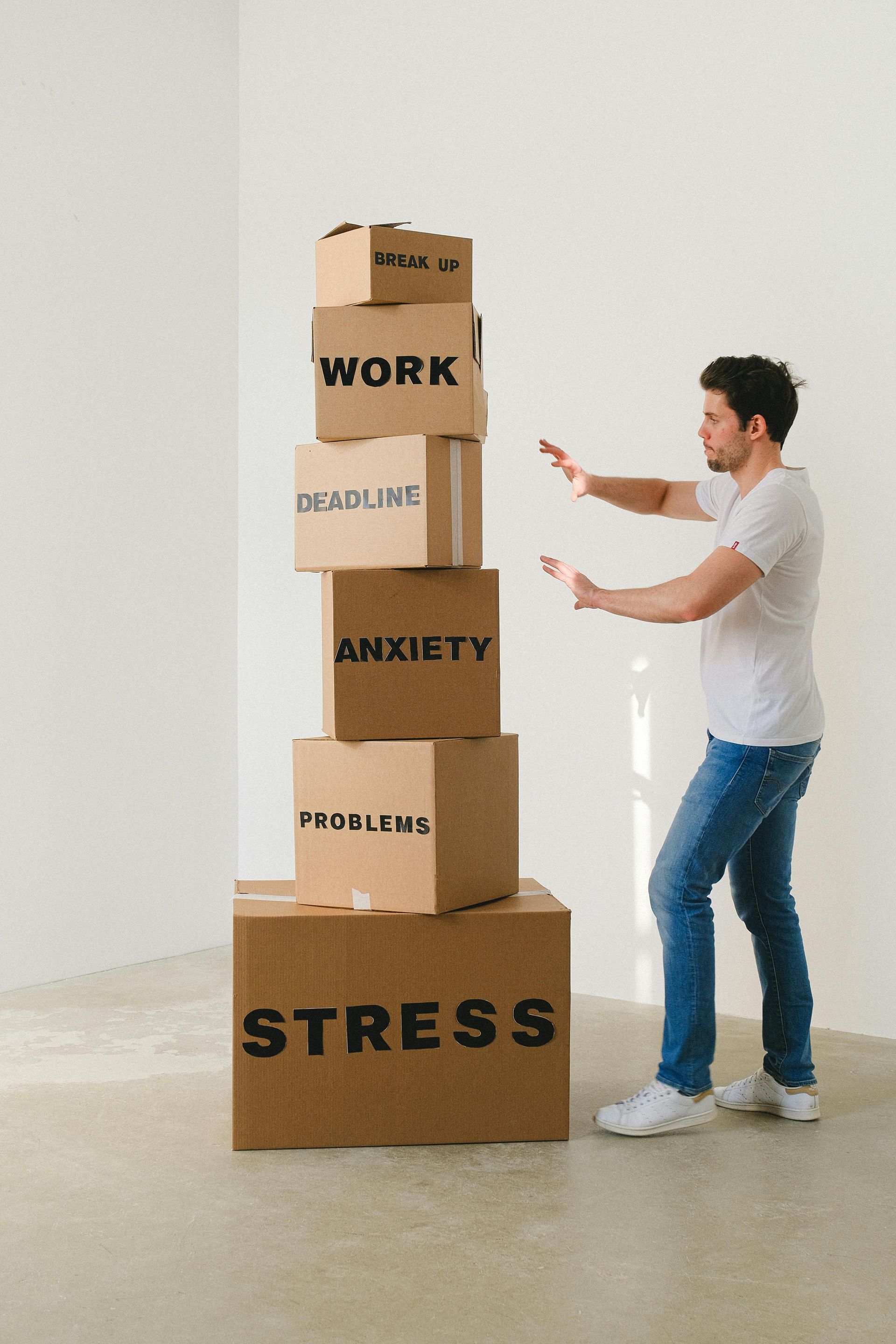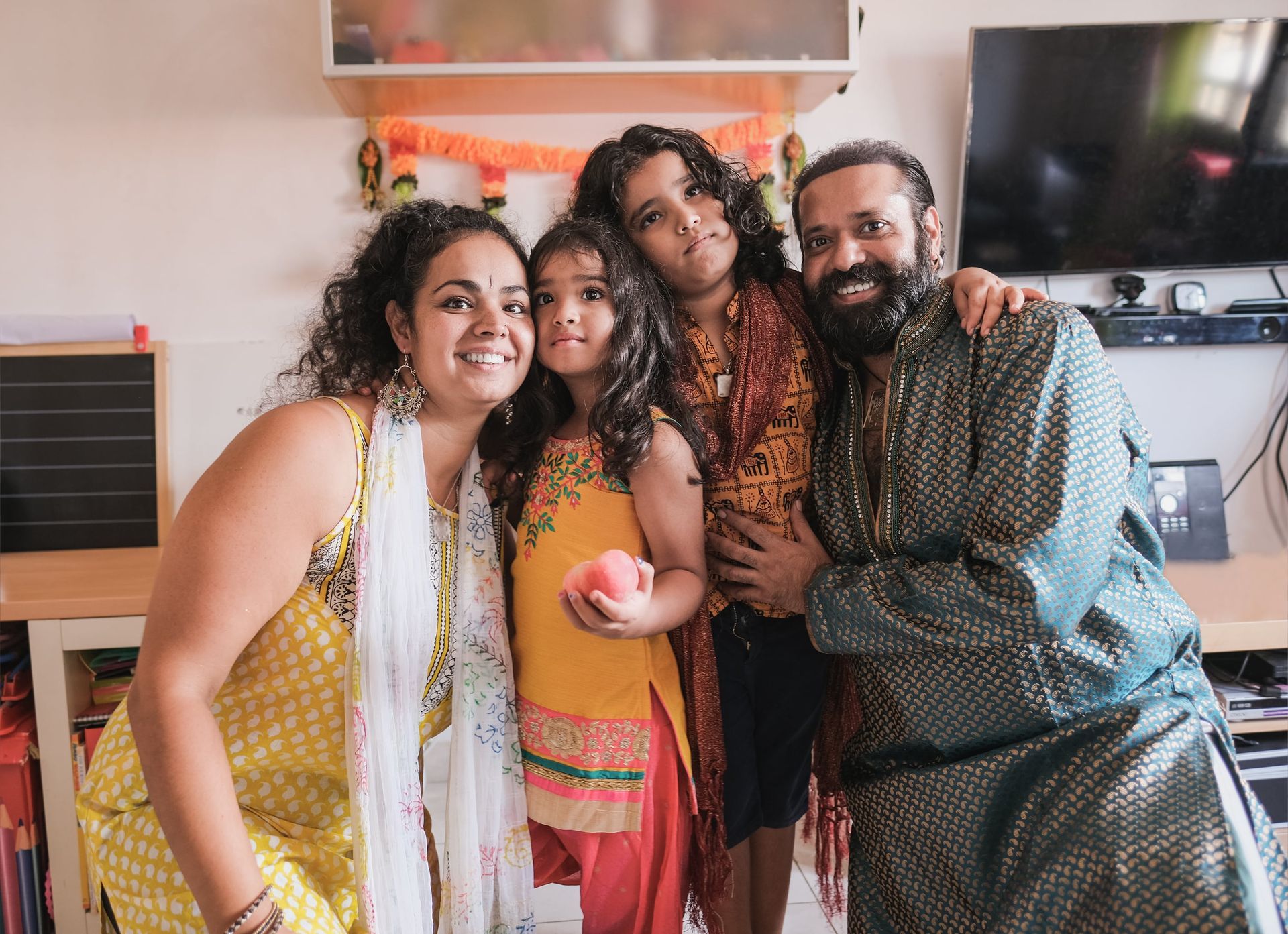Why Somatic Therapy Might Be the Missing Piece in Healing Anxiety for South Asian & Immigrant Adults
Explore how somatic therapy bridges mind + body healing for anxiety in South Asian/immigrant adults and our unique trauma-informed approach | Therapy for Anxiety in Etobicoke

Why Somatic Therapy Might Be the Missing Piece in Healing Anxiety
You’ve done the self-help books, tried to “just think positive”, and maybe even committed to hours of talk therapy. And yet, the anxiety keeps creeping in. The racing heart, the constant foot on the gas pedal, the worry you can’t turn off, even when everything looks fine on the outside. Especially for South Asian and immigrant adults, our cultural narrative often says: be strong, don’t complain, make the family proud. Almost like a mantra.
But what happens when your body is whispering (or screaming): "Something’s not right!"?
Read about what anxiety is and how to identify it here.
That’s where somatic therapy comes in. A healing path that doesn’t ask you to focus on only changing your thoughts, but also to learn to listen to your body, its cues and signals. Often, traumatic events or unresolved emotional issues can become “trapped” in the body, manifesting as anxiety, muscle tension and chronic activation of the nervous system.
In this post, we’ll explore:
- What somatic therapy is, and how it differs from standard talk therapies
- Why it is particularly relevant for our cultural/immigrant lived experiences
- How it supports anxiety relief by rewiring the nervous system and inviting safety back into our bodies
- Why working with someone skilled in trauma + culture makes all the difference
By the end, you’ll see how your anxiety isn’t simply "all in your head”; it’s a story your body is telling you, and you can learn to hear it, sit with it, process it, and finally move through it.
What Is Somatic Therapy
The word “somatic” comes from the Greek soma, meaning “body.” In essence, somatic therapy invites us to pay attention not just to our thoughts or emotions, but to what our body is holding: the tight jaw, the clenched fists, the restless legs, the throat that goes dry when you try to speak.
Traditional talk therapy (top-down approach) often begins with: “What are you thinking? What are you feeling?” Somatic therapy (bottom-up approach) asks: "What are you sensing? Where is your body reacting? What happens when you pause the thought track and feel the body instead?" Techniques may include breathwork, body-scans, movement, grounding exercises, all meant to help you reclaim a sense of safety in your body and release stored energy (Kuhfuß. et al., 2021)
This is especially meaningful if you grew up in a culture or family where feelings were often quietened, suppressed, or dismissed with the phrase “just get over it.” When your brain says, “I’m safe,” but your body still says, “No way,” something’s got to change. Somatic therapy gives your body permission to speak its truth.
Cultural Context
Why It’s Especially Relevant for South Asian / Immigrant / BIPOC Adults with Anxiety
As a South-Asian / immigrant adult, you may feel… between worlds, experience a push and pull that cannot be explained unless you have experienced it. The culture you carry at home, the culture you navigate out in the world; the life that is expected of you and the one you want for yourself. You carry expectations, migration stories, generational patterns, “Do you know what we sacrificed so you could have xyz?” or "You need to be strong!". You may feel pressure to perform, to succeed, to survive. And silence? That may have been taught as a strategy: stay quiet, don’t rock the boat, keep the peace, survive.
But here's the truth that we come to realize, often too late. Anxiety doesn’t care about legacy or success. Anxiety is the body’s alarm system going off when it didn’t get the message that it’s okay to rest. It’s the nervous system stuck in "On mode". Somatic therapy can help regulate that system by processing what the body didn’t get to in the moment.
More than just “mind over matter,” it’s about: body + culture + nervous system working together. When talk-therapy alone leaves a gap (“I know what I feel, but I don’t know why my body still reacts”), somatic techniques fill the gap. You learn to decode your body’s language, soothe the fight/flight/freeze/fawn stuck in the physiology, and in doing so help lessen the grip of anxiety.
Because cultural relevance matters: when therapeutic work aligns with your identity, lived experience, and generational story, you feel seen, and healing becomes meaningful, not just “another conversation”, however important those might be.
“When the body still says ‘danger’ long after the mind has said ‘you’re safe’, somatic therapy gives your nervous system permission to come home.”
How Somatic Therapy Helps Calm Anxiety
Here are some key ways somatic therapy works for anxiety, especially for someone with your cultural and experiential background:
Body Awareness
You learn to notice where tension sits: jaw, shoulders, chest, fists — and track it rather than avoid it. Anxiety often presents physically: “muscle tension, particularly in the neck, shoulders, jaw, and back.”
Grounding & Nervous System Regulation
Simple exercises help shift your nervous system from “Danger all the time” to “I am safe enough.” Techniques like body-scanning, breathwork, safe-touch, and “feet on ground” are effective.
Releasing Stored Energy or Trauma
Often, we learned to freeze, bury or ignore what our culture called “small issues.” Somatic therapy helps the body finish what it started. Early research shows reductions in anxiety symptoms.
Integration of Mind + Body
Instead of just changing thoughts, you build a stronger connection between your inner world and physical world, giving you more choices, more agency.
Enhanced Self-Compassion & Resilience
Reconnecting with your body shifts you from “What’s wrong with me?” to “What is my body trying to tell me?” That shift fosters self-compassion; transformative in a culture where shame often masks emotional truth.
“Your nervous system is not the enemy. It’s the messenger. Somatic therapy helps you listen, not fight.”
What a Somatic Session Can Look Like
If you’ve had talking therapy before (like CBT or DBT), you might recognize the pattern: you sit, you talk, you process. Somatic therapy looks a little different (Nicholson et al., 2025).
- You may start by exploring physical sensations: “Where are you feeling tight? What happens in your chest when you say that word?”
- Your therapist might guide you into pendulation (moving between calm and activation states) or titration (working in small, safe doses with trauma).
- You’ll be invited to use your inner resource: memories of safety, supportive images, experiences of connection — so you have a grounding counterweight.
- It may feel odd at first. Less about ‘talking your way out’ and more about ‘feeling your way through’ or what has now come to be known as the popular "Feel your feelings". And that’s okay.
- Over time, you’ll likely discover your body’s rhythm (when you’re collapsed, activated, neutral) and learn tools you can do between sessions.
In the context of South-Asian/immigrant healing, this matters: You are not being asked to reject your culture or your heritage. You’re being asked to honour it, and to give your body a chance to finish the stories your mind already told. Bringing culture & somatics together means your healing can be rich, respectful and grounded.
How to Get Started
Here are some tips to engage with somatic therapy meaningfully:
- Choose a therapist who is familiar with trauma + culture. Someone who understands immigrant stress, generational patterns, and BIPOC dynamics. A simple search for "trauma therapist near me" or "culturally sensitive therapy" should bring up top therapists in your area.
- Start small. Even 5 minutes a day of body awareness (hand on chest, slow breath) builds your capacity to notice.
- Ask about techniques. Grounding, body scans, and safe movement are core. If you hear “automatic thought worksheet” only, you may miss the somatic piece.
- Frame it for your culture. Example: In our culture, we often say ‘just calm down’. Somatic therapy teaches you how to calm your body, not just your mind.
- Track your progress. Notice how you feel before and after a session (or exercise): Less tension? More energy? More clarity?
- Be patient. Building nervous-system regulation takes time. Celebrate small wins: 10 seconds of stillness, one hour less hyper-vigilance, one deep breath without anxiety.
- Connect with your support system. If family or cultural pressure is high, consider how you’ll communicate your needs. You might say: “I’m doing something to help my body rest”, which can feel more accessible than “therapy for anxiety”.
“Healing is not about making your body stop hurting. It’s about teaching your body to feel safe again.”
Somatic therapy is not a luxury; it can be a vital bridge between your body’s wisdom and your mind’s noise. South Asians, immigrants, and BIPOC carry so much: culture, history, expectation, hope, generational trauma. Don’t let anxiety take up residence in your body. Let your body speak. Let your nervous system rest. Let your voice be heard.
If you’re reading this and thinking: Yes. This is me!
You’re not alone.
You don’t have to stay stuck in anxiety that whispers “What’s wrong with me?” or "Is this all in my head?", over and over.
Your body is ready to talk, and you’re ready to listen.
Click the button below to book your free 20-minute consult, where we’ll explore how somatic-informed, culturally-sensitive therapy can support you. Our anxiety therapists and trauma therapists in Etobicoke and across Ontario are ready to support your healing journey.
References
Kuhfuß, M., Maldei, T., Hetmanek, A., & Baumann, N. (2021). Somatic experiencing - effectiveness and key factors of a body-oriented trauma therapy: a scoping literature review. European Journal of Psychotraumatology, 12(1), 1929023
Nicholson, W. C., Sapp, M., Karas, E. M., Duva, I. M., & Grabbe, L. (2025). The Body Can Balance the Score: Using a Somatic Self-Care Intervention to Support Well-Being and Promote Healing. Healthcare, 13(11), 1258.
Recent Posts
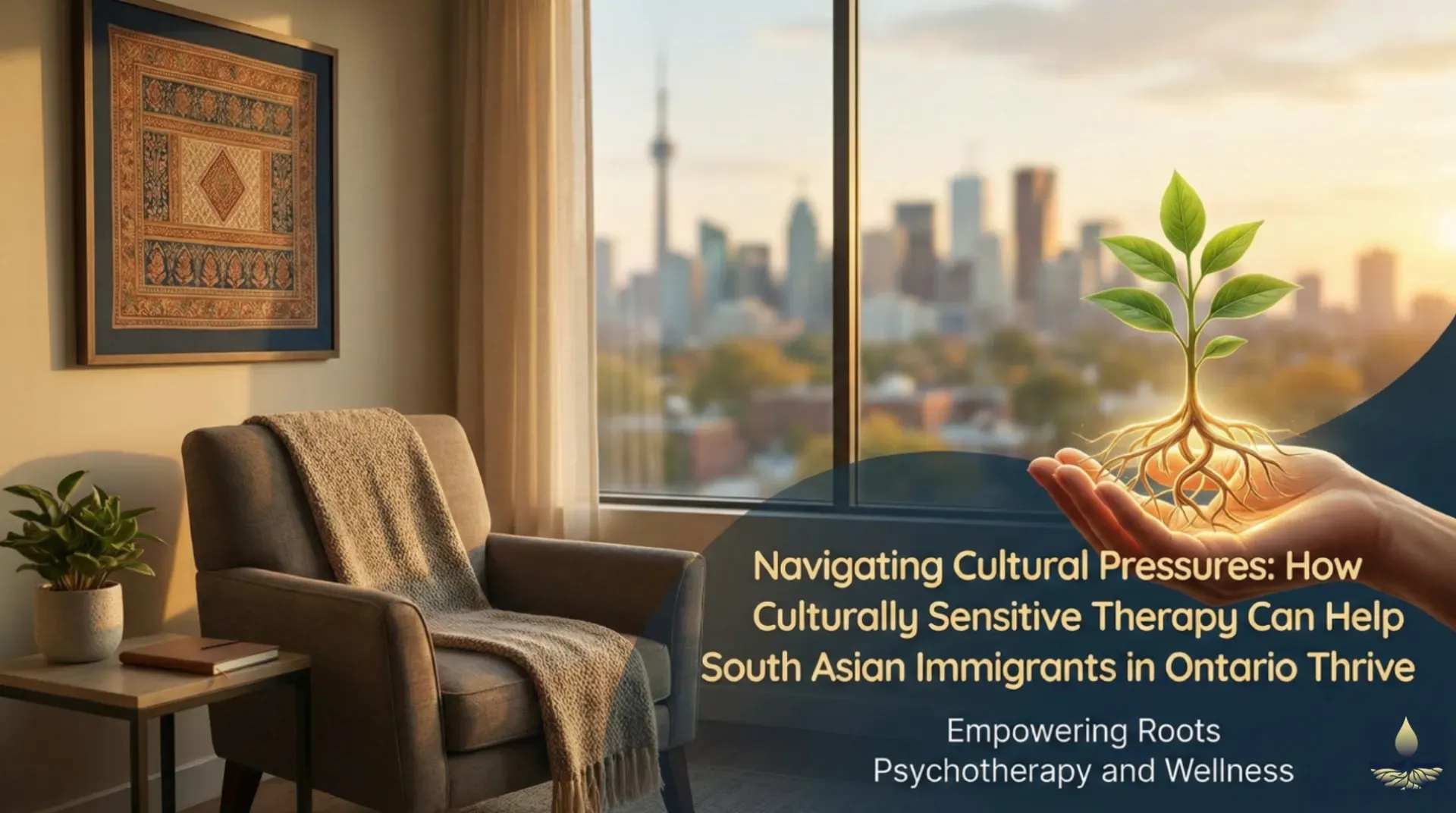

Are you Looking For a Therapist Who Works With The South Asian Population in Ontario?
Finding a therapist who understands the unique pressures, fears, and challenges faced within the South Asian community can make all the difference in your healing journey. I know that cultural expectations, family dynamics, and personal struggles often feel overwhelming and can sometimes make it hard to reach out for support.
In my practice, I bring a deep understanding of these experiences, offering a space where you can feel truly seen, heard, and supported without judgment. Together, we’ll work toward breaking cycles, setting boundaries, and finding ways to honor your own needs while respecting your roots.
If you're ready to explore how therapy can support you, I invite you to book a free 15-minute consultation. Let’s talk about how we can work together to help you find relief, strength, and clarity.


